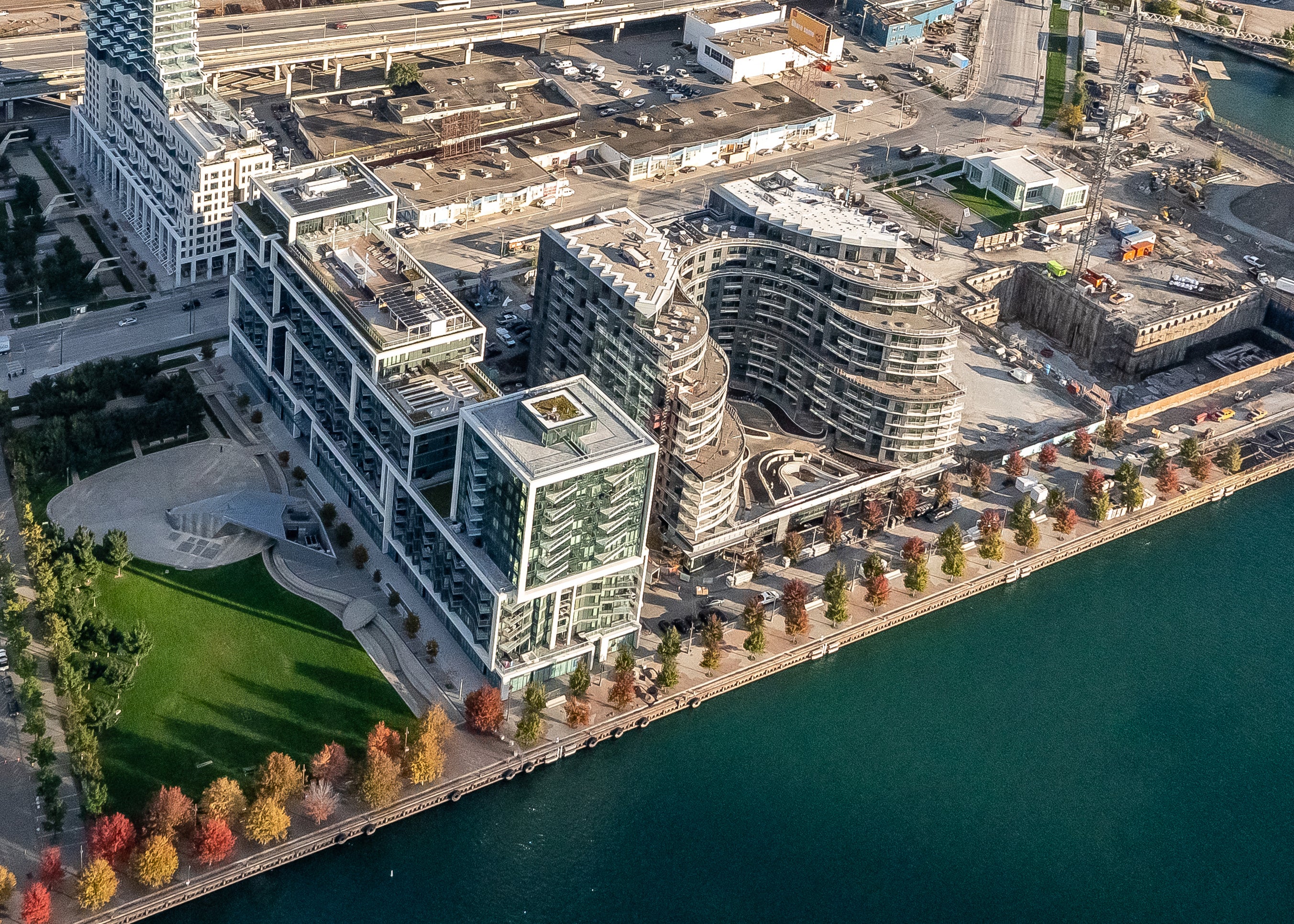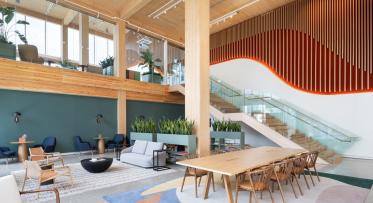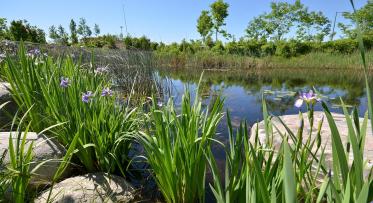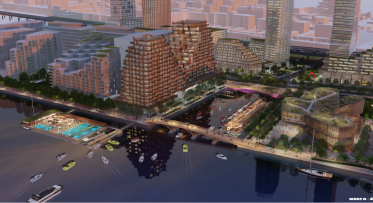The Future of Waterfront Revitalization: Imagining Canada’s Next Generation Community
Aerial view of the Toronto Port Lands, East Bayfront community, central waterfront and downtown core.
POSTED: APRIL 23, 2019
By: Meghan Hogan
With the recent release of our Five-Year Strategic Plan, we’re rolling out an in-depth series of blog posts that explore the three overarching goals that our organization will work towards achieving by 2023/24. Last week, we walked you through our first big goal – to complete more than 20 priority projects, including Port Lands Flood Protection, York Street Park and Rees Street Park, enhancements to the Jack Layton Ferry Terminal entrance and many more.
Now we’re going to shift gears and look at our second goal for the next five years of revitalization: Imagining Canada’s Next Generation Community. You might be wondering what exactly does that mean and how do we intend to achieve it? Well, just keep on reading to find out…
Building on our success
 Aqualina at Bayside is a landmark sustainable residential development pursuing LEED Platinum certification and features a Net-Zero-Dwelling.
Aqualina at Bayside is a landmark sustainable residential development pursuing LEED Platinum certification and features a Net-Zero-Dwelling.
When Waterfront Toronto was created in 2001, the three orders of government laid out a clear and ambitious mandate: to enhance the economic, social and cultural value of waterfront lands, and to create an accessible and active waterfront for living, working and recreation. At the heart of our mandate and approach is sustainability and innovation – it’s built into the very fabric of everything we do. With each project we deliver, we strive to support a thriving city while sustaining healthy ecosystems.
Waterfront Toronto has since established itself as a leader in innovation and sustainability when it comes to creating new, forward-thinking neighbourhoods along the lake. For example, we introduced Minimum Green Building Requirements (MGBR) more than a decade ago to ensure that new developments on the waterfront would lead the way in sustainable design. The MGBR’s set out a variety of targets and performance measures related to energy, water, waste, transportation and materials designed to positively impact the environment and local community. A few of the requirements include that buildings must earn LEED Gold certification, sub-metering must be installed to measure energy use in each suite, and all buildings must have green roofs, bike parking and electrical vehicle charging stations.
These standards have since won international awards and have helped inform the building standards that are now used across the City of Toronto. To learn more about our history of pushing the boundaries in green building design, check out our recent blog post.
The next chapter in our continually evolving approach to green city-building came in 2017 with the release of our new Resilience and Innovation Framework for Sustainability. This framework is designed to help us focus on climate change resilience, advanced innovation and smart cities development, and reflects our commitment to preserving and enhancing the natural environment. Moving forward, this report will guide the development of the waterfront’s next innovative communities, including Villiers Island – a new district in the Port Lands that we’re aiming to make one of the world’s first climate-positive neighbourhoods.
Imaging Canada’s next generation sustainable community
 Since 2017, Waterfront Toronto has hosted a variety of stakeholder and public meetings for interested members of the public to learn more about the Quayside project.
Since 2017, Waterfront Toronto has hosted a variety of stakeholder and public meetings for interested members of the public to learn more about the Quayside project.
With a track record of success and an appetite to take the next transformative step forward, we’ve turned our attention towards Quayside – our most recent exploration of what an innovative community by the lake could be.
In 2017, we launched a Request for Proposal (RFP) aimed at selecting an innovation and funding partner for Quayside – a 12 acre area located at the eastern edge of the East Bayfront community – to help advance ambitious, high-level objectives for the neighbourhood including:
- Sustainability, Resiliency and Urban Innovation: Creating a globally significant demonstration project for climate-positive urban development.
- Complete Communities: Establishing a complete community that emphasizes quality of place, and provides a range of housing types for families of all sizes and income levels within a robust mix of uses, including public open space, culture, recreation, vibrant retail, education-related activities and offices.
- Economic Development and Prosperity: Providing a testbed for Canada’s cleantech, building materials and broader innovation sectors to support their growth and competitiveness in global markets.
- Partnership and Investment: Developing a new partnership model that ensures a solid financial foundation, manages financial risk and secures revenue that funds future phases of waterfront revitalization.
Sidewalk Labs was selected through a competitive procurement to work on a proposed plan for how to achieve this new mixed-use community where technology could support the outcomes that matter to Canadians including sustainability, inclusivity, and prosperity.
Sidewalk Labs is currently working on what’s called a Master Innovation and Development Plan that will propose an approach to the revitalization of Quayside. Waterfront Toronto expects to receive the proposed plan in the spring of 2019. We will consider this proposed plan against the objectives set out in the RFP and our established criteria, and in consultation with our partners and the public. Should the Waterfront Toronto Board of Directors decide to pursue some or all of the elements of the proposed plan, the next step would involve discussions with all three orders of government to determine their level of interest and support for implementation.
While Quayside represents only a small area of the Toronto waterfront, it’s potential to demonstrate a precedent-setting approach to city-building is immense. Some of the solutions could serve as a global example for addressing some of the toughest urban growth challenges including sustainability, resilience, housing affordability, mobility, and economic opportunity.
To learn more about Quayside, how to get involved and what’s to come in 2019, visit www.quaysideto.ca. Next week, we’ll examine the third and final goal of the Five-Year Strategic Plan – signature projects that will put Toronto on the global map.




